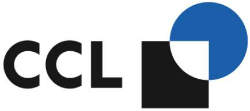CCL Label Völkermarkt GmbH in Austria has developed a new Super Stretch Sleeve – Triple S® – that opens up a range of new possibilities and supports a sustainable recycling process.
The new super stretch sleeve material construction makes an optimal recycling process possible.
This new technology competes very favourably against shrink sleeves from the environmental and cost point of view.
The high elasticity of the Triple S® film, coupled with stretchable inks developed specially for this application, enables sleeve application to individually designed and strikingly shaped containers.
It is a cost-effective solution for premium brands’ contoured containers. A material stretch of up to 54% means the system is ideal for shaped bottles with variations in diameter of up to 35%. In addition to this, 50% less material is needed than for comparable shrink sleeves.
Benefits:
- 50% less material than a comparable shrink sleeve
- ideal for squeezable bottles
- always fit tightly and perfectly flush
- reverse printing protects graphics (scuffing)
- up to 50% cost saving
- high efficiency
- ideal system for shaped bottles with variations in the diameter of up to 35%
- easy removal
- no glue contamination
- enables bottle-to-bottle recycling, clean separation from PET flakes
- no water pollution
- label waste can be recycled, closed loop
- lowest carbon footprint of all decoration technologies
- less material consumption
- less transportation volume
- no shrink tunnel
- no adhesive needed
- low energy input of film production and label waste recycling
The technical committee of European PET Bottle Platform (EPBP) authorised an independent laboratory to evaluate the effect of CCL Label GmbH’s Triple S, super stretch sleeve on the quality of recycled PET.
This label system is a printed high stretch polyethylene based sleeve for the decoration of contoured PET bottles.
The tests demonstrated positive impact on current European PET recycling under the following conditions:
- The density of the printed sleeve is less than 0,96 g/cm³
- The inks do not bleed into the washing solution during the PET recycling process
- The PET bottle with printed sleeve is still detected and sorted as a PET bottle by standard NIR sorting equipment
Based on the assessment’s outcome and current market knowledge in 2013, EPBP concludes that CCL Label GmbH’s Triple S, super stretch sleeve will have positive impact on current European PET recycling.
The OFI (Technologie & Innovation GmbH) in Vienna also authorised and certified the recyclability of LDPE stretch sleeves. In the recycling processes that are used at present, the largest share of energy and resources used is needed in the washing and separation stages.
Usually washing requires several stages, primarily because traces of adhesive sticking to the labels have to be removed. Material input is a factor through which the enormous use of resources may be reduced.
The LDPE stretch sleeves are already physically separated from the ground material at the cutting stage, without adhesive residues remaining on the bottles, i.e. the resources needed for the washing process could be reduced significantly.
The separation of PET flakes and LDPE stretch sleeves can be easily and efficiently effected by means of density separation (PET flakes sink to the bottom, LDPE labels float to the surface), while labels made of other polymers (PVC, PET or OPS shrink sleeves) cannot be separated from PET flakes in this way, because their density is also greater than the density of water, therefore both the label material and the PET flakes will sink to the bottom.
If no food-contact quality is required, LDPE stretch sleeves combined with HDPE bottles may be recycled together without resource-intensive separation, because small traces of LDPE in HDPE are not regarded as problematic.
To summarise the relevant aspects regarding recyclability of LDPE labels on PET and HDPE bottles, the use of stretch sleeves has good energy reducing and ecological potential in the context of recycling because of possible cost savings at the washing and separation stages.
In addition to this the OFI carbon foot-print has been validated by the Lenfest Center for Sustainable Energy of the Columbia University.
“The carbon footprinting work is extensive and thoroughly done. One of the main findings – that the product carbon footprint of the “Triple S™ Super Stretch” sleeve is about four times smaller than that of the standard shrink sleeve – seems directionally correct and explained by the combination of less raw material (per sleeve) and lack of required shrink tunnel during labelling.”

